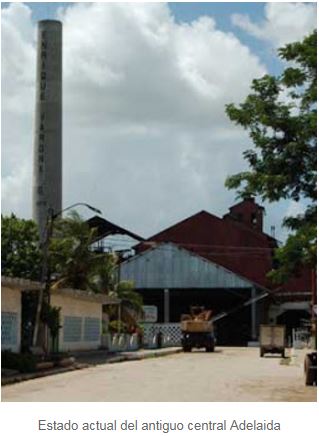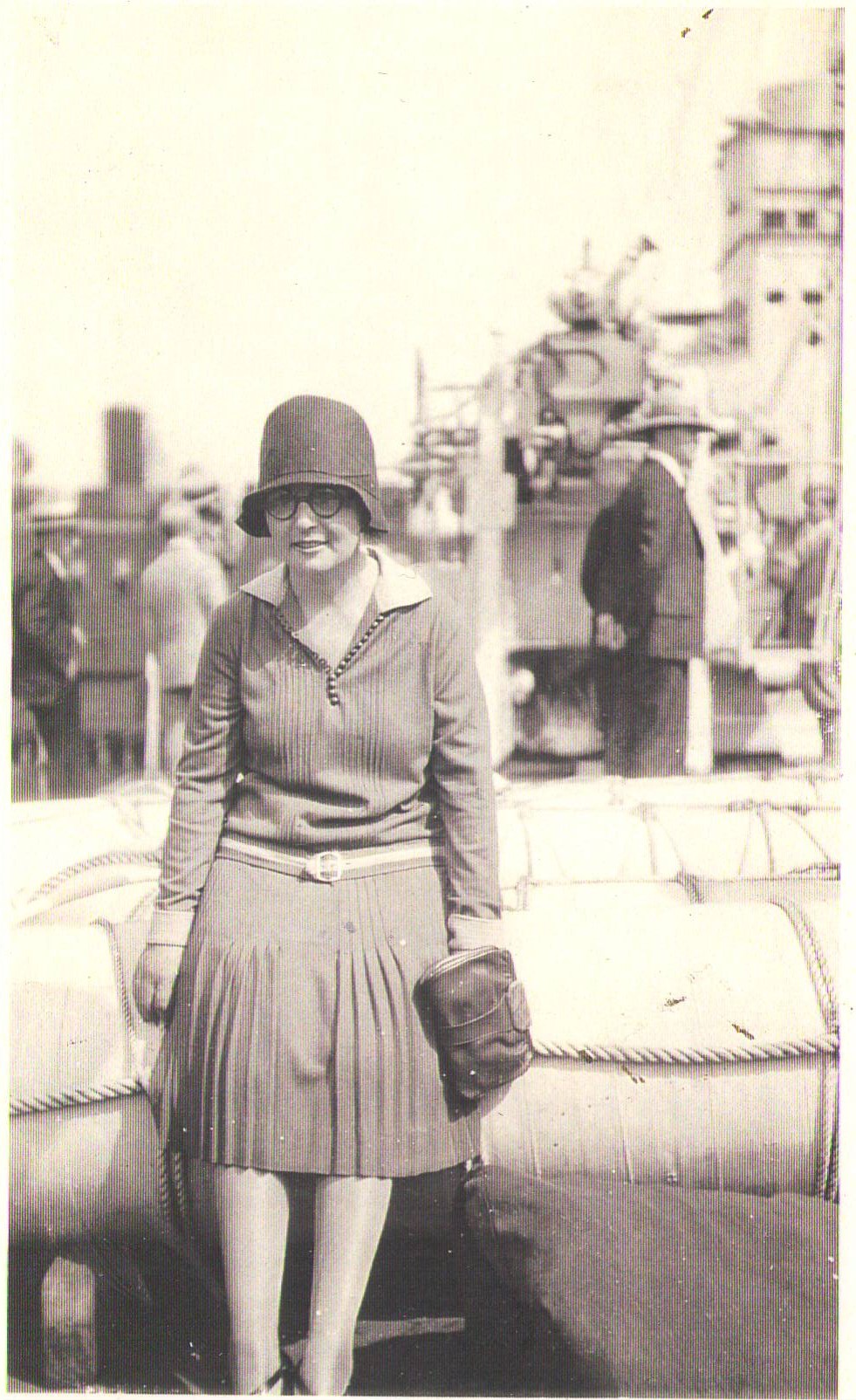In 1903 Ramon Mendoza founded the Cuban Automobile Club along with a group of friends. The organization sponsored the first professional races in Havana. Set in the city and its environs, the races underscored the glamour of the car in its power to whisk people to the resorts and subdivisions west of the city.
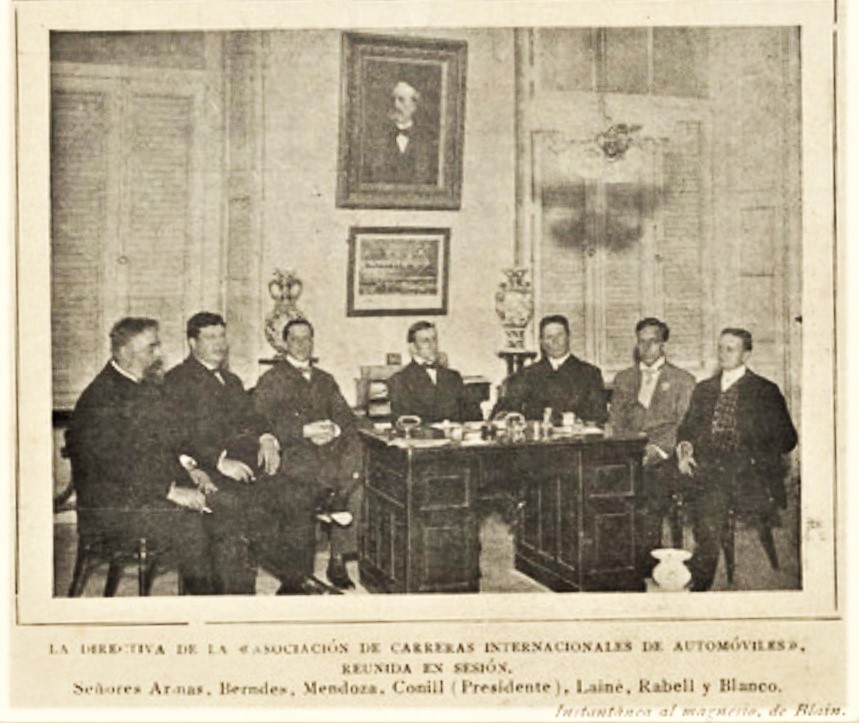

Working with President Menocal’s public works secretary who facilitated the passing of the Congress tourism bill that led to the 1919 construction of the iron bridge over the Almendares River, a number of the Mendoza brothers and Arellano relations developed subdivisions and luxury homes in Miramar and Marianao.
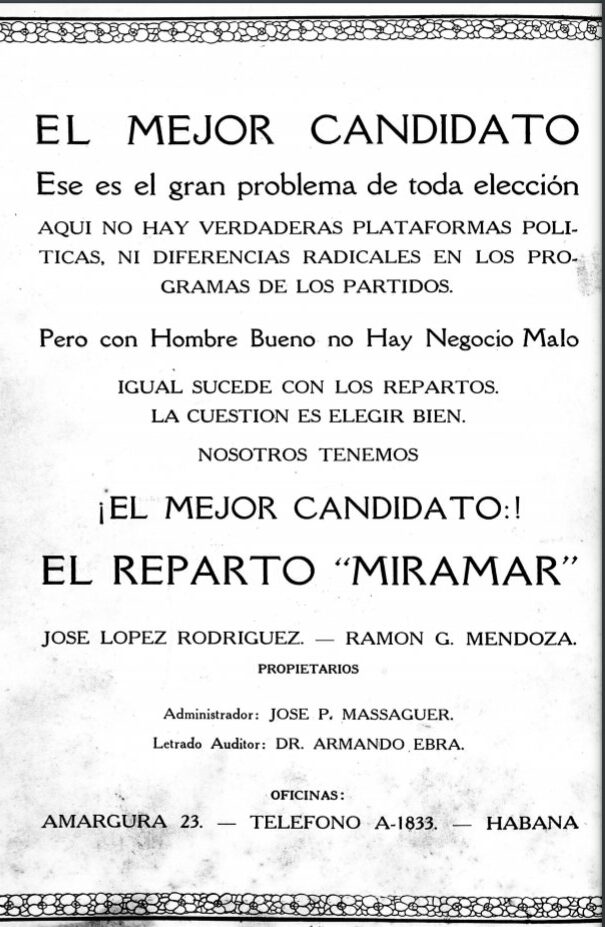
Pablo, Victor, Claudio and Miguel Mendoza, were among a privileged group that, having the confidence of both American investors and the Cuban governments, made fortunes in property during the boom of the twenties. Facilitating the collaboration between American investors and the Cuban government of presidents Menocal and later, Machado, they were key players in the formation of the Cuban American Realty Company which in turn spawned the Havana Biltmore Yacht and Country Club Company as well as the Havana Biltmore Realty Company. The companies’ boards were composed of American investors. Chapter 12
Not everyone was so lucky. The fortune of the tobacco millionaire Eduardo Casas disappeared almost overnight through ill-advised real estate investments by his widow.
In the volatile economy many families lost their money. The situation translated into a tolerance of strong-man political leadership that could guarantee stability.
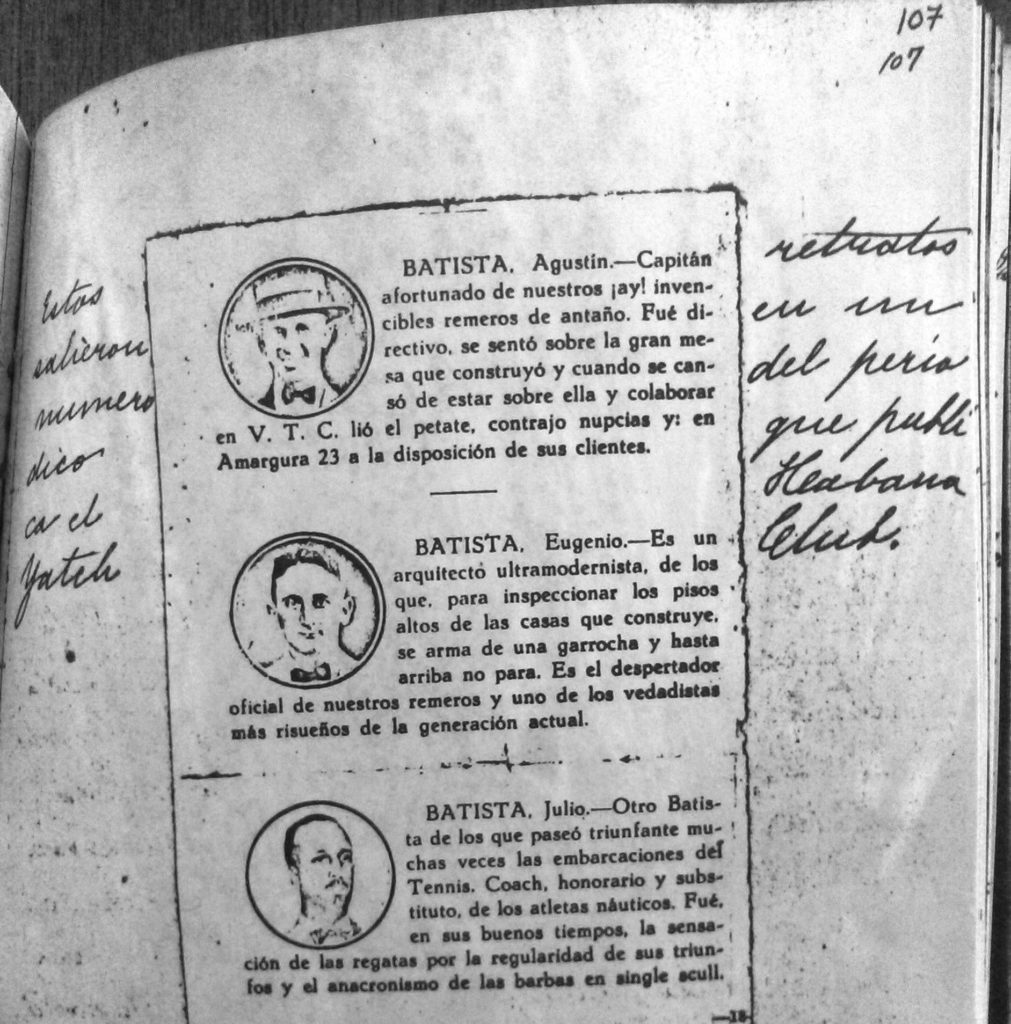
a copy of the Havana Yacht Club bulletin profiling three of the Batista brothers’ accomplishments in rowing regattas enclosed in Julia’s memoirs.
Unlike the majority of old families after the war of independence, Don Antonio’s grown children prospered in the sugar industry. Following the example of their Pedroso-Montalvo ancestors, they made their capital work by investing in new technology for their mills. See Part IV Chapter 11
As members of the Cuban ruling class and having attended the same universities as the officials of the American Occupation administration, the Mendozas had influence in the government as well as with northern investors. Their legal expertise gave them an edge when it came to negotiating sugar tariffs and production quotas.
Nevertheless, certain branches of the family were not safe from the economy’s ups and downs that affected all of Cuban society. While some members would benefit, others became more dependent on their wealthier relatives.
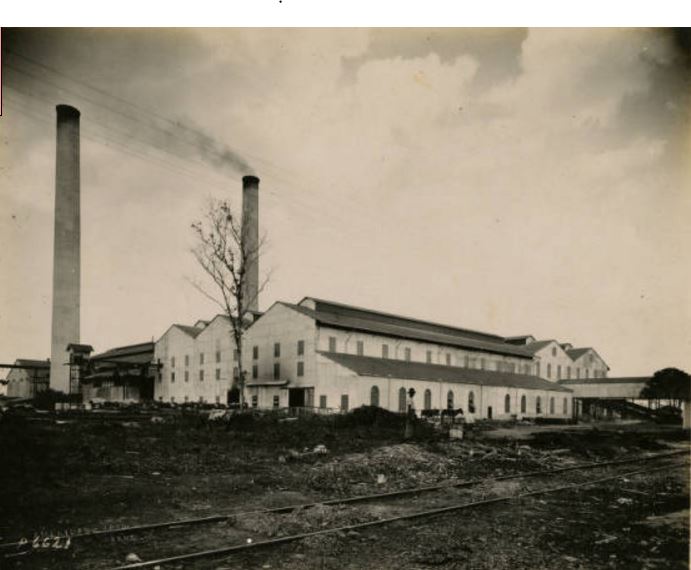
Batista brothers Jorge, Victor and Melchor tried their hand, with mixed success, at managing various aspects of the Cunagua operation. See Chapter 11 p 224 Photo one of album: Central Cunagua, Ciego de Avila, 1918 University of Miami Library Cuban Heritage Collection.
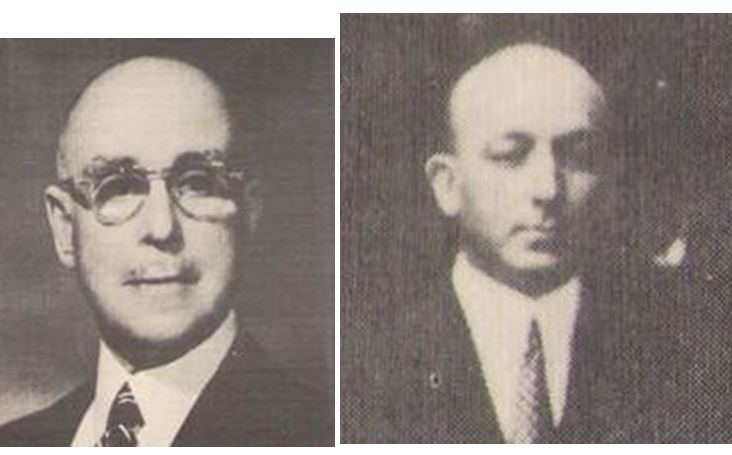
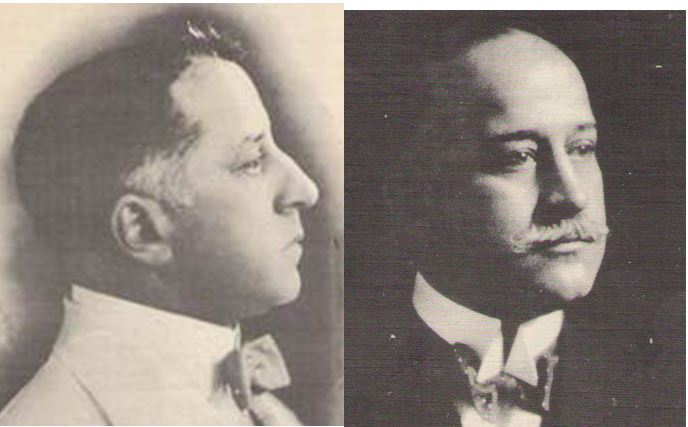
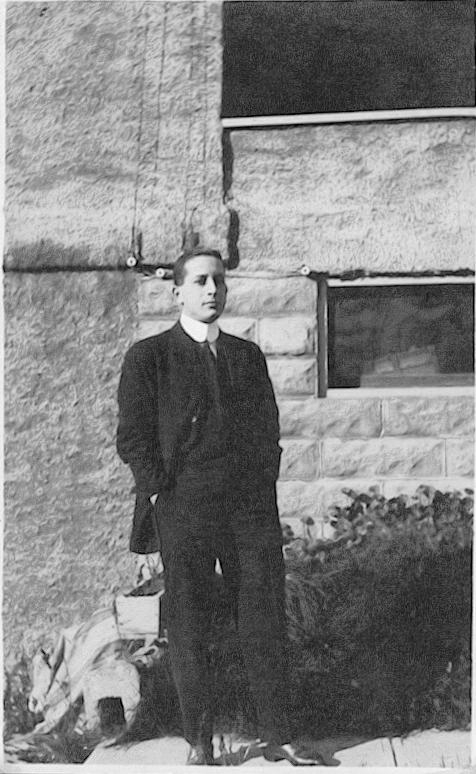
A graduate of Cornell’s Electrical Engineering program Jorge Batista’s career in the sugar industry was punctuated by accidents. In 1915 he suffered severe burns to his arms in an accident at the Amistad sugar mill in Güines.A smaller mill or colono, Jaronu, (now Brasil), was established as part of Cunagua’s operations. Between 1924 and 1926 Jorge, with Julio’s financial backing, attempted to make a profit running Jaronu. Unfortunately, sugar prices fell during this period and they abandoned the enterprise.
During this time, Jorge had a bad fall while working in the mill and broke several ribs. Likely, he abandoned this line of work after 1926 because his epilepsy made working in an industrial facility a dangerous proposition.
Jaronu was declared a national monument in 2009 as an example of innovative urban planning of micro town where the administrator’s house was surrounded by workers’ homes and compounds, school, church and other amenities. During the 1933 revolution it was taken over and operated for some time by its workers. It was nationalized with the 1959 revolution. In Place documents its design as a reflection of North American derived ideals of planned communities. and explores how Cuba frames it within its national cultural memory. See Chapter 11, p 235
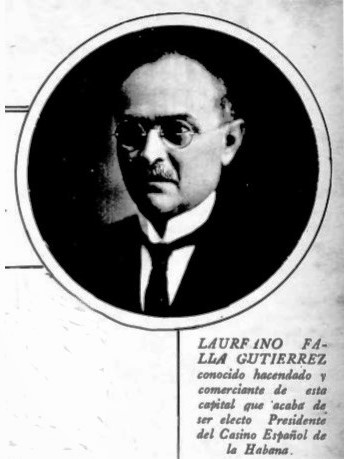
Electricity, an important new element of the urban grid and a source of energy for mills created a growing dependence on the privately owned electricity companies. By the 1920s, major stockholders of these companies such as President Gerardo Machado, in power from 1925 to 1933, and Laureano Falla enjoyed a dramatic concentration of wealth thanks in part to the low rates to power their mills.
The Central Adelaida was the country home and major mill of the Falla family. Laureano Falla had bought the Nauyú farm from an American company in 1915 and began the construction of a state of the art mill. The village that grew up around the mill was named Falla.
The central directorate of the mill included Alejandro Suero Falla and Viriato Gutierrez Falla. The latter was the husband of Falla’s daughter Adelaida. After Machado was elected, he became his right-hand man.
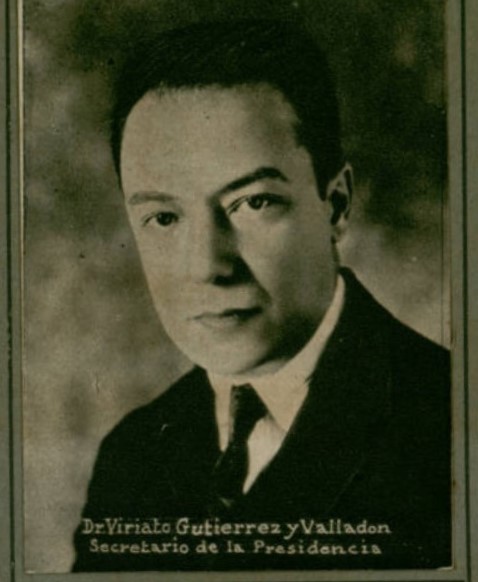
Portrait, “Dr. Viriato Gutierrez y Valladora, Secretario de la Presidencia”,Machado Government. Cuba en 1925, Susini El Cigarro Sin Rival Album album of souvenir pictures enclosed in tobacco products, The images represent politicians, buildings, and places of interest of the six Cuban provinces in 1925. detail p. 8 University of Miami Library, Cuban Heritage Collection
The first phase of Guillermina’s adult life was spent as a teacher in villages as well as sugar mills owned by her uncle, Laureano Falla. Following this, she worked as a provincial school inspector. Through correspondence studies and periodic examinations in Santa Clara and Havana, she was able to continue her education, eventually completing graduate studies in Pedagogy. In the capital she was drawn into the lives of the Batista family through her Falla aunt and cousins.
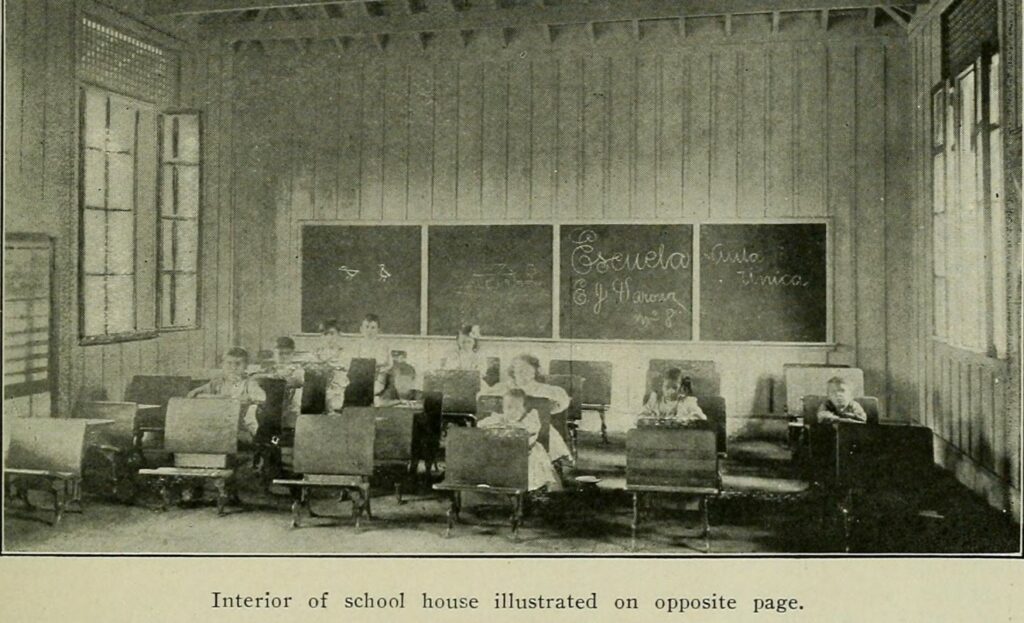
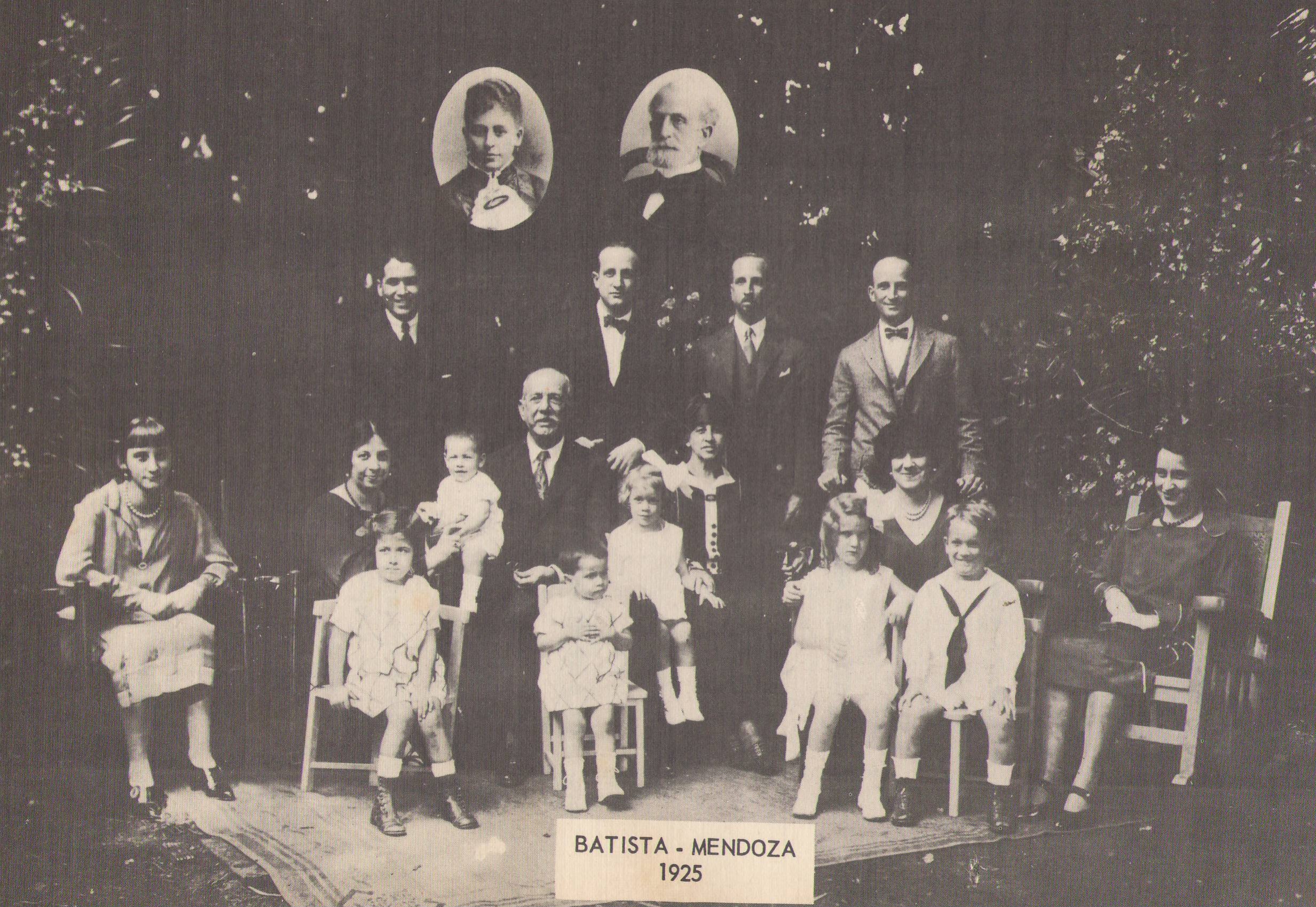
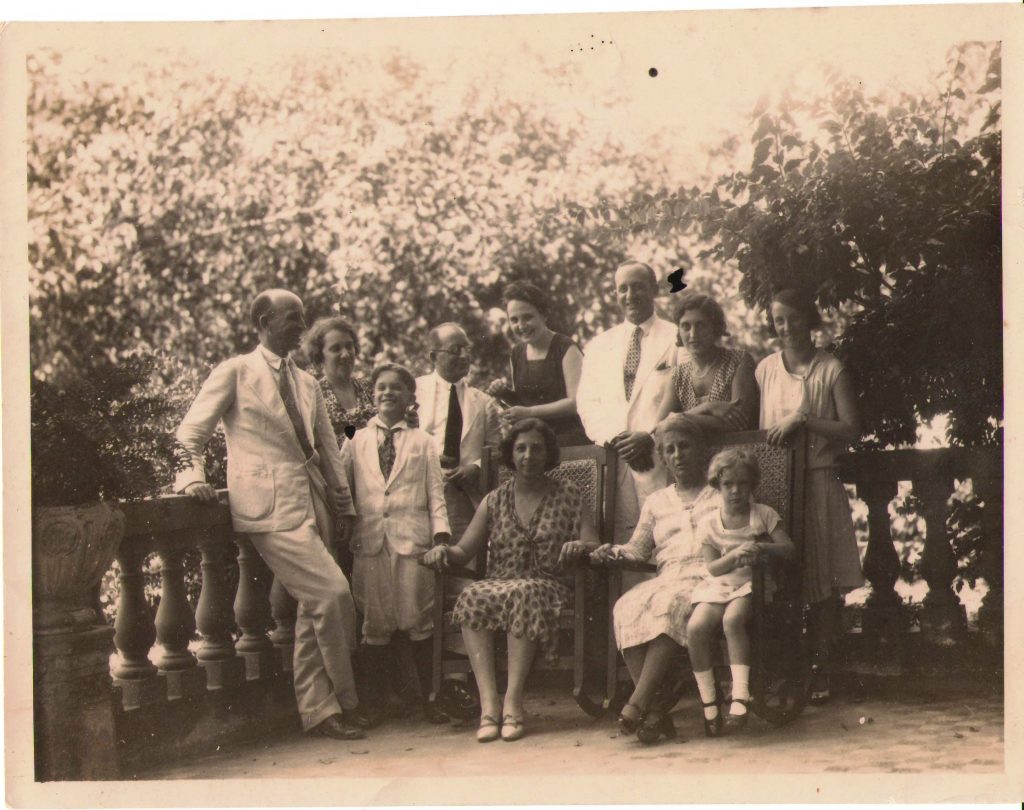
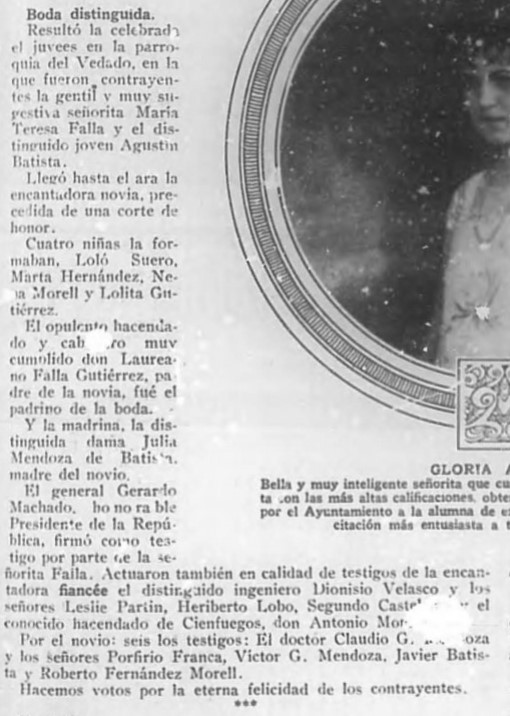
The Falla Bonet family became linked to that of the Mendozas through the marriage of Maria Teresa Falla, Laureano’s daughter, to Agustin Batista y Mendoza in 1926.
Adelaida Falla would, through Viriato’s connections, provide government patronage positions to the newlyweds Jorge Batista and Guillermina Villareal y Bonet around 1930.
The economic and political stability of the island was tied to world sugar prices. These went precipitously up and down during the first three decades of the century creating a desire for strong leadership to guide the economy.
As it turned out, the increasingly repressive and corrupt rule of President Gerardo Machado, elected in 1925, proved intolerable to the generation that came of age in the twenties.
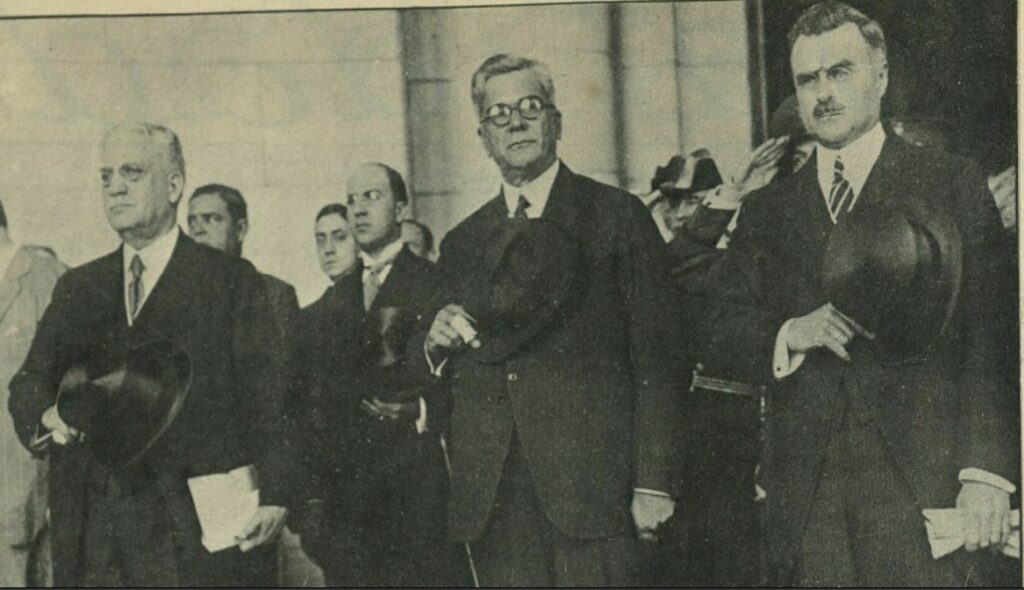
For Timeline of Events Discussed in Chapters 11 – 12 See Part IV (pp. 257-60)
